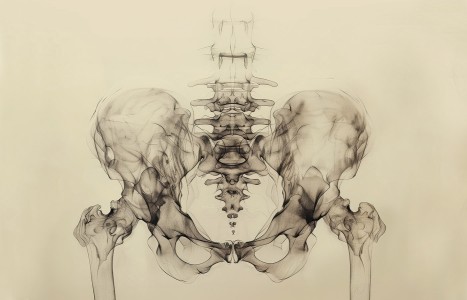People today want convenience, whether it be from their bank, credit card, favorite retail store, or restaurant. They demand it from the companies who hold their loyalty, including their health care providers (you). They don’t want to call and possibly be put on hold, and they want to use an app or schedule an appointment on your website. Here are three reasons your practice can gain by switching to online appointment scheduling.
The State of 21st Century Acupuncture in the U.S. (Pt. 3)
- Whether you accept it, avoid it or live somewhere in between, insurance coverage has become a defining issue for our profession.
- The encouraging news is that coverage has expanded in meaningful ways. The challenging news is that reimbursement, across the board, remains inadequate.
- By creating a pathway for acupuncturists to participate as providers under CMS, the Acupuncture for Our Seniors Act strengthens our legitimacy, positions us alongside other recognized health professionals, and increases the likelihood that major insurers will follow suit.
Author’s Note: Part 1 of this six part series appeared in the September 2025 issue; part 2 appeared in the October issue.
If there’s one topic that unites nearly every acupuncturist in practice today, it’s insurance. Whether you accept it, avoid it or live somewhere in between, insurance coverage has become a defining issue for our profession. Patients increasingly expect to use their benefits, practitioners want to be compensated fairly for their time and expertise, and the system itself remains – at best – fragmented.
The encouraging news is that coverage has expanded in meaningful ways. The challenging news is that reimbursement, across the board, remains inadequate. And here’s a critical point: that problem is not unique to acupuncturists.
Bad Reimbursement Is Everywhere
|
Series Outline |
When acupuncturists see low payments or repeated denials, it is easy to feel singled out. Yet our physician colleagues are experiencing the same struggles. In conventional medicine, cognitive and relational services – whether it’s a primary care doctor managing a complex case or an acupuncturist delivering a carefully tailored treatment – are reimbursed at a far lower percentage of billed charges than high-tech procedures or pharmaceuticals.
The numbers are sobering. Across multiple specialties, physicians often receive 30%–50% of what is billed, and rates continue to erode. Prior authorization adds further delay, while fee-for-service models reward volume instead of quality time with patients.
Acupuncturists are not outsiders to this problem; we are living inside the same broken reimbursement structure as every other frontline provider. Recognizing this helps us frame our advocacy: The system undervalues care that emphasizes thought, presence and time – whether delivered with a stethoscope or a needle.
Medicare: A Narrow Benefit With Wider Impact
At present, Medicare covers acupuncture only for chronic low back pain, under strict limitations: 12 visits in 90 days, with eight additional if the patient is improving, capped at 20 per year. What is equally important is who can bill. Licensed acupuncturists are not recognized as Medicare providers, meaning services must be billed under physicians, nurse practitioners or physician assistants.
Enter the Acupuncture for Our Seniors Act. This bill, if passed, would correct a longstanding inequity by recognizing licensed acupuncturists as independent Medicare providers. The change matters for two reasons. First, it would allow seniors direct access to acupuncture without the administrative workaround of supervision. Second, it would shift the policy landscape for the entire profession.
Why CMS Recognition Matters
CMS sets the tone for the insurance industry. Large commercial carriers look to Medicare when deciding which providers to include and which services to cover. Recognition of acupuncturists within Medicare is not just about serving seniors with chronic pain; it is a structural correction that opens the door for broader acceptance across private insurance and Medicaid programs.
This is why the Acupuncture for Our Seniors Act deserves our support. By creating a pathway for acupuncturists to participate as providers under CMS, it strengthens our legitimacy, positions us alongside other recognized health professionals, and increases the likelihood that major insurers will follow suit.
Choice, Not Mandate
Some practitioners express concern that Medicare participation will be mandatory or that opting out will be impossible. Let’s be clear: No one will be forced to take Medicare patients. Just as many physicians and specialists choose not to contract with Medicare, licensed acupuncturists would retain that choice. The bill does not impose a mandate; it creates an option.
For those who want to serve seniors – and for patients who desperately want access to acupuncture through their benefits – this bill provides a path forward. For others, nothing changes. What does change is that our profession gains formal recognition, and with it, new leverage in conversations about reimbursement and inclusion.
VA, the States, and Commercial Coverage
Momentum is not limited to Medicare. The Veterans Health Administration has formally integrated acupuncture into its whole-health system, delivered either within VA facilities or through the VA Community Care Network. Several states now include acupuncture in their essential health benefit (EHB) benchmark plans, guaranteeing coverage in individual and small-group markets. Commercial carriers remain inconsistent, but patient demand and policy shifts are gradually expanding access.
Still, all of these systems share the same reimbursement scaffolding: prior authorization, visit limits, narrow networks, and undervalued fee schedules. The frustration is real. But again, it is not ours alone. We are participating in a healthcare system that routinely underpays for patient-centered services, regardless of who provides them.
Where DRGs Fit: Inpatient Opportunities
Most outpatient acupuncturists don’t spend their days thinking about diagnosis-related groups (DRGs), but they are central to how hospitals get paid. Under DRG reimbursement, hospitals receive a fixed payment for an inpatient stay based on the patient’s diagnosis and procedure codes. Whether the patient stays two days or 10, the hospital gets the same lump sum.
This creates both a challenge and an opportunity. Hospitals are constantly looking for ways to shorten length of stay, reduce complications and improve patient satisfaction – because those are the levers that determine whether they “make” or “lose” money under DRG bundles.
Acupuncture can fit beautifully into this equation. Studies have demonstrated benefits in post-operative pain, nausea, anxiety, and functional recovery. Each of these outcomes directly affects length of stay, readmission rates and patient satisfaction scores – all critical metrics under DRG-based payment. When administrators see that acupuncture can reduce costly complications (such as opioid side effects, delayed mobility or prolonged recovery), they have a financial incentive to integrate it.
This is why inpatient acupuncture is slowly but steadily growing in large hospital systems. It’s not only because of patient demand or physician curiosity; it’s because DRG reimbursement rewards interventions that improve outcomes without adding new billable costs. For acupuncturists, positioning ourselves as contributors to DRG success is one of the strongest arguments for hospital-based integration.
Practical Steps for Today
- Play clean. Bill correctly using CPT 97810–97814, document time precisely, and avoid errors that invite denials.
- Verify up front. Clear benefit checks protect both you and your patients from unwelcome surprises.
- Decide your lane. Insurance can be one stream of patients, but it doesn’t have to be your only one. Cash pay, packages and good-faith estimates under the No Surprises Act all remain viable.
- Stay engaged. Advocacy matters. Supporting the Acupuncture for Our Seniors Act is about opening doors, not closing them.
- Think beyond the clinic. Learn how DRGs shape inpatient medicine, and be prepared to explain how acupuncture supports shorter stays, better recoveries and improved patient satisfaction.
Looking Ahead
Insurance will never define acupuncture, but it will continue to shape access. Patients who can use their benefits are more likely to try – and stick with – treatment. Our profession has the evidence, the safety record and the patient demand. Now we need the structures of reimbursement to catch up.
The Acupuncture for Our Seniors Act is not a panacea, but it is a necessary correction. It acknowledges that licensed acupuncturists are legitimate providers of care. It aligns us with colleagues across medicine who also chafe under inadequate reimbursement. And it sets the stage for greater inclusion in the insurance systems that define so much of American healthcare.
And as hospitals continue to refine care under DRG bundles, acupuncture has the chance to prove its worth inside inpatient medicine – not as an “extra,” but as a cost-saving, outcome-improving intervention that makes financial sense. That is the kind of alignment that moves acupuncture from the margins into the mainstream – not just in theory, but in the daily operations of the U.S. healthcare system.
Resources
- Smith CL, Reddy B, Wolf CM, et al. The state of 21st century acupuncture in the United States. J Pain Res, 2024;17:3329-3354. https://doi.org/10.2147/JPR.S469491.
- NCD 30.3.3 – Acupuncture for Chronic Low Back Pain. Centers for Medicare & Medicaid Services, 2020.
- Medicare Claims Processing Manual – Transmittal R12185 (Acupuncture & Dry Needling Coding Updates). Centers for Medicare & Medicaid Services, 2023.
- Directive 1137 – Complementary and Integrative Health, Acupuncture. U.S. Department of Veterans Affairs; recertified 2022.
- Smith CL, Mulcahy M. The impact of inpatient acupuncture on a mixed hospital floor: a pragmatic 3-month cost-effectiveness retrospective evaluation. Med Acupunct, 2024 Feb 1;36(1):27-33.
- Oregon Administrative Rules (OAR) 836-053-0017: Essential Health Benefits Coverage of Acupuncture. Effective Jan 1, 2022.
- No Surprises Act: Overview of Good Faith Estimates. Centers for Medicare & Medicaid Services, 2022.
- Smith CL. Demystifying Acupuncture: Modern Answers About Ancient Medicine. GWN Publishing, 2024.



